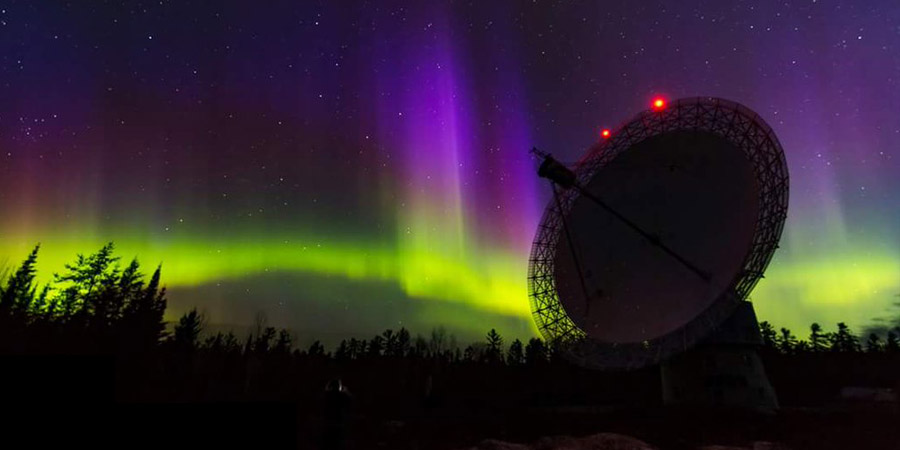Strong G3 geomagnetic storm
Sunday, 8 May 2016 15:25 UTC

A surprisingly strong geomagnetic storm hit Earth this morning. This is likely the earlier than expected arrival of a coronal hole solar wind stream. The NOAA SWPC reported strong G3 geomagnetic storm conditions and the Wing-Kp as well as Potsdam reported moderate G2 geomagnetic storm conditions. Today's header image comes from the talented Brian Drourr Photography who captured this amazing shot from Algonquin Provincial Park, Canada.
The Bz component of the interplanetary magnetic field went down to -13 nT for a couple of hours after midnight UTC and this combined with the fast solar wind speed (500km/s) caused a significant geomagnetic response that sparked aurora which could be seen from many locations in the northern United States. Here are a couple of examples from the USA:
May 8, 2016 Auroa Borealis Wilton, Iowa: https://t.co/yo1XK9DS1b via @YouTube
— Paul Brooks (@PBrooksISCN) 8 mei 2016
#Aurora 3:02 am CST Northern Wisconsin @TamithaSkov @CountryViewFoto @eljakeo30 @NorthLightAlert @_SpaceWeather_ pic.twitter.com/q70siDmp6T
— Corinne (@AuroraNorthWI) 8 mei 2016
Mother's Day 2016 Aurora - Teviotdale, Ontario @eljakeo30 @TamithaSkov @AuroraMAX @SpaceWeatherCA @TweetAurora pic.twitter.com/lnhD7PDFp1
— Dave Patrick (@wwxchaser) 8 mei 2016
A #timelapse of the incredible #NorthernLights display over #Seattle this morning. Starts out faint, then boom! pic.twitter.com/BETHghgzt4
— Sigma Sreedharan (@sigmas) 8 mei 2016
More geomagnetic storming up to the minor G1 geomagnetic storm level remains possible in the hours ahead as the solar wind speed remains elevated around 600km/s and the direction of the IMF (Bz) is mostly southward, dipping as low as -10nT. Be sure to follow the data live here on our website.
Thank you for reading this article! Did you have any trouble with the technical terms used in this article? Our help section is the place to be where you can find in-depth articles, a FAQ and a list with common abbreviations. Still puzzled? Just post on our forum where we will help you the best we can!
Latest news
Latest forum messages
Support SpaceWeatherLive.com!
A lot of people come to SpaceWeatherLive to follow the Sun's activity or if there is aurora to be seen, but with more traffic comes higher server costs. Consider a donation if you enjoy SpaceWeatherLive so we can keep the website online!

Space weather facts
| Last X-flare | 2025/03/28 | X1.1 |
| Last M-flare | 2025/04/20 | M1.0 |
| Last geomagnetic storm | 2025/04/20 | Kp5 (G1) |
| Spotless days | |
|---|---|
| Last spotless day | 2022/06/08 |
| Monthly mean Sunspot Number | |
|---|---|
| March 2025 | 134.2 -20.4 |
| April 2025 | 119.8 -14.4 |
| Last 30 days | 113.4 -30.8 |


